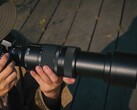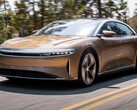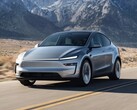Range anxiety remains a concern for electric vehicle owners. However, Panasonic has revealed it might be close to a breakthrough that could extend the driving range by 25 percent.
The battery giant is developing a battery system with higher energy storage capacity by eliminating the anode during the manufacturing stage. According to Reuters reporting, Panasonic hopes the technology will be ready by the end of 2027.
Charging the battery for the first time will produce a lithium metal anode. This method will enable Panasonic to pack in more active cathode materials, thereby increasing the energy capacity while maintaining the same volume.
To put the gain in driving range in context, a 25 percent boost will add about 90 miles (145 km) to the Tesla Model 3, without any increase in weight or current battery pack size. This means the cheapest Tesla car could last about 450 miles on a single charge.
Panasonic also plans to cut costs by lowering the proportion of nickel used in the battery. The energy giant, however, has not indicated if the new tech will result in lower EV costs for Tesla and other EV makers.
David Odejide - Tech Writer
- 333 articles published on Notebookcheck since 2024
I am a writer and software developer with a background in Mechanical Engineering and a distinction MSc in Environmental Management (Energy). My career spans fullstack development (building desktop, web, and Android apps for enterprise clients), Content Strategist/Business Developer in the solar industry, and writing research-driven articles on electric vehicles, renewable energy, and consumer tech.
I previously ran WindowsFoneFans (remember when Windows phones were a thing?) as a social media hub for Windows phone enthusiasts. My work includes hundreds of video scripts on EVs and sustainability, with over 100 million views on YouTube. I also write about chipsets, mobile hardware, and emerging IT trends, drawing on years of hands-on development experience.
Whether it is decoding Snapdragon nodes or analyzing offshore wind policy, I aim to deliver content that is both technically sound and widely accessible. In my spare time, I manage one of the largest LinkedIn groups for wind energy professionals and enjoy getting lost in Scotland’s natural beauty.
























